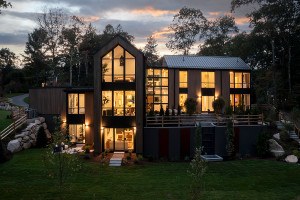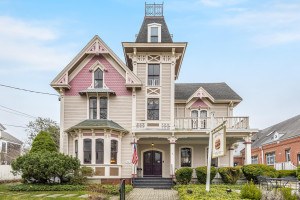What To Do About Boston’s Student Housing Problems
The Globe’s Shadow Campus series is an eye-opener for many people who may have been unaware of the disturbing, and even dangerous, circumstances in which many of Boston’s college students are living.
The main reason for the problem is simple and clear: Greed on the part of some landlords, willing to skimp on repairs and ignore city rules, regulations, and laws in their quest for to turn a higher profit.
But these kinds of landlords are only able to make that extra buck for a couple of reasons: too many college students looking for too few affordable apartments combined with a city incapable of monitoring the safety and sanitary conditions of its housing, a city that’s unable or unwilling to police its landlords.
What’s the problem?
Residents of Allston, Brighton, and the Fenway might find it inconceivable, but private college enrollment in the area has stayed pretty much constant during the past decade, with around 120,000 full-time and part-time, graduate and undergraduate students enrolled in any one year. It was prior to this, between 1990 and 2005, that Boston saw major growth in the numbers, more than a 20 percent increase. (This, even as Northeastern University was reducing its student count by 30 percent as it tightened up its admissions standards.)
Below, this table illustrates the change between fall 2007 and spring 2014 for the largest colleges and universities in Boston:
| Fall 2007 Total Enrollment | Fall 2007 On Campus w/in Boston | Fall 2007 Off Campus w/in Boston | Spring 2014 Total Enrollment | Spring 2014 On Campus w/in Boston | Spring 2014 Off Campus w/in Boston | |
|---|---|---|---|---|---|---|
| Berklee College of Music | 4,093 | 753 | 2,467 | 4,525 | 974 | 2,880 |
| Boston College | 14,395 | 7,328 | 2,222 | 13,918 | 3,153 | 3,061 |
| Boston University | 27,015 | 11,584 | 7,725 | 32,897 | 11,757 | 5,791 |
| Emerson College | 4,351 | 1,444 | 791 | 4,309 | 1,847 | 675 |
| MA College of Pharmacy & Health Sciences | 2,997 | 587 | 623 | 4,407 | 658 | 1,774 |
| Northeastern University | 19,155 | 7,367 | 5,101 | 21,026 | 6,957 | 7,009 |
| Simmons College | 2,012 | 1,084 | 888 | 4,538 | 1,034 | 774 |
| Suffolk University | 8,426 | 765 | 2,558 | 7,960 | 1,170 | 3,256 |
| Wentworth Institute of Technology | 3,728 | 1,753 | 497 | 4,075 | 1,567 | 973 |
| Total - large colleges and universities | 86,172 | 32,665 | 22,872 | 97,655 | 29,117 | 26,193 |
| All other colleges & universities | 32,024 | 5,067 | 8,075 | 23,080 | 5,590 | 6,870 |
| Total | 118,196 | 37,732 | 30,947 | 120,735 | 34,707 | 33,063 |
At the same time, colleges in the area have undergone major construction projects to add more on-campus housing. Since 2000, colleges have added 29 dormitories and 11,000 dormitory beds; within the past five years, there have been six dormitories built with over 3,100 new beds.
But there’s been no real change in the situation—too many students, too few dorms, and still too many students are looking to live off-campus. The rules of supply and demand apply, and it leads to higher housing prices in some neighborhoods. Not much new housing of any kind is going up in Mission Hill, the Fenway, Allston, or Brighton these days, at least not at prices affordable to college students (and some buildings exclude renting to undergraduates, anyway). We’re all seeing the impact of that.
What to do?
With the above in mind, there are a couple of obvious things to do. We need more housing, preferably on-campus, to reduce the stress on housing in some neighborhoods. This means, though, that the same neighborhoods that have been feeling pressure from the effects of student housing need to be willing to accept more student dormitories in or on the edges of their neighborhoods. And, colleges will want to build up, not out, so those residents will have to be willing to accept more towers like the ones at Northeastern and MassArt in Mission Hill, Roxbury, and the Fenway.
Dealing with dangerous living conditions should be an easy fix. The city of Boston has strong laws already on the books to deal with scofflaw landlords. The problem is that they’re not being enforced.
For years, Boston had a law that required inspections whenever an apartment turned over—whenever a new tenant signed a lease, but, few landlords followed the rules and the punishment for not doing so was … nothing. And so the law was ignored.
Elected officials weren’t satisfied with this very adequate law, and passed a new one in 2012, which required every landlord to register every one of his/her apartments with the city every year and to have inspections every 5 years on a rolling basis. The registration comes with an annual tax (I mean, fee), of course, for most property owners. Two years after its implementation, the city estimates that as few as a one-third to one-half of Boston’s landlords have signed up.
There is one other law that relates to student housing. Boston City Councilor Michael Ross led the fight for a “4-student” housing regulation that forbids landlords from renting an apartment to more than four undergraduate students regardless of the number of bedrooms in the unit and regardless of the size of the building.
With these, the city should be able to keep its housing stock in good shape. That it hasn’t isn’t entirely the fault of reckless slumlords, it’s the fault of the city. Enforcement of the existing laws and housing regulations would go a long way to solving the problem of unsafe and unsanitary housing, for students as well as all other tenants in the city.
Every action has a reaction
There will be some unexpected, unfortunate consequences as a result of enforcement, however. Improving apartment conditions by requiring landlords to spend money on repairs, and upgrades will undoubtedly lead to higher prices as they look to gain a return on their investments.
Landlords may very well decide to give up on the student housing racket completely, seeing the work not worth the effort, and upgrade their apartments to a level where they can start renting out to young professionals. We might even find even more students looking to move off-campus when the quality improves. This will put more pressure on the city’s already overburdened housing market.
The ripple effect could be felt across the city. The new rental housing ordinances would do very little to satiate the demand for housing by the working class, and already, there’s growing concern among tenants in certain neighborhoods, who feel they’ll be forced out of crowded apartments due to occupancy rules and code enforcement. Just like with students, landlords could end up deciding to give up on these people figuring it’s not worth the trouble, and end up turning their buildings into the high-end apartments everyone is talking about.
The risk that housing will get more expensive is worth it, of course. The means for Boston to have every home be safe and sanitary is definitely there. It’s the will that seems to be missing.


